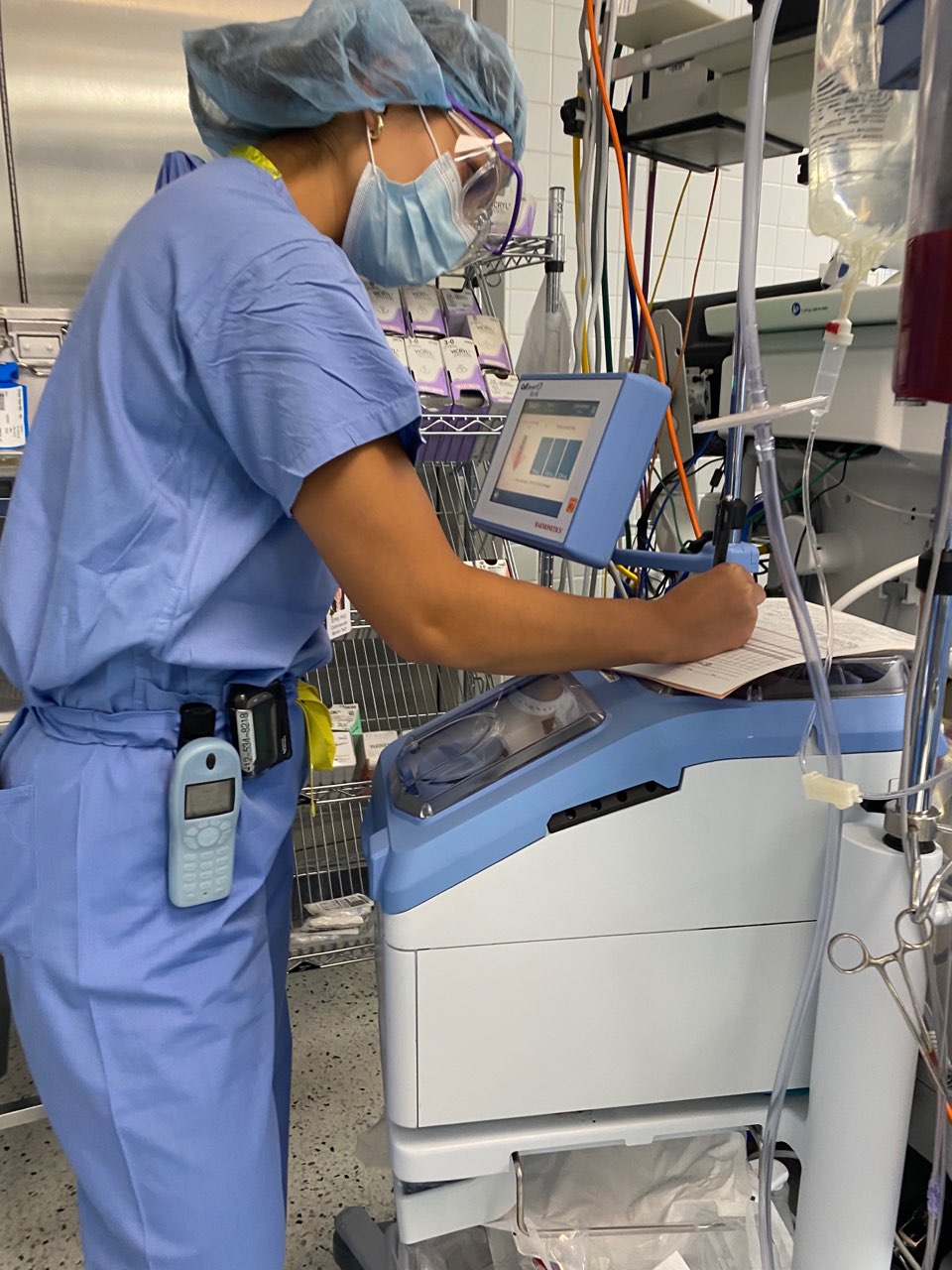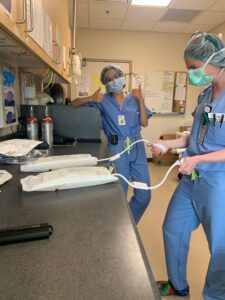Our CVMT’s provide a wide range of services in multiple departments within hospitals. You’ll find CVMT’s in the OR, pre-op, post-op, interventional labs, ICU, and nerve block centers. They are experts in autotransfusion, and they assist with complex procedures like line placement, IABP, and nerve blocks. They work daily with anesthesia partners and other physicians, obtaining the equipment and products needed to ensure a smooth procedure for patients while assisting MD’s and partners during procedures. In honor of Anesthesia Tech and CVMT Appreciation Week 2021, we wanted to showcase an inside look into the lives of our highly skilled team members. For today’s highlight, we spoke with Jenna Corrigan about her experience and success as a cardiovasular technician with our Minneapolis-St.Paul team.

How would you describe the work of a Cardiovascular Monitoring Technician?
To scratch the very surface of what we do as CVMTs, we work more closely with anesthesiologists on a routine basis: flushing transducers for hemodynamic monitoring, acting as non-sterile hands for the MDA during arterial lines and central lines, assisting with nerve blocks, and rounding on patients with hemodynamic lines. Another routine service we do is running a Cell Saver: collecting blood during a procedure and processing for autologous blood return to the patient. Along with our routine, everyday services, we also operate Intra-Aortic Balloon Pumps and Impella devices in the CVORs, cath lab, and CVICU.
What does a typical work day look like for you?
As morning staff, we will sign up for “to start” cases that we partake in and prepare what we need. This includes setting up Cell Savers, prepping lines for hemodynamic monitoring, flushing blood sets and mini-drips for heart surgeries, setting up supplies and drugs for nerve blocks, and anything else we have orders for. Once we get our morning clinical work finished, we will round on our patients in the ICU and communicate with ICU staff regarding the status of lines. We also perform set-up changes on lines when they are due to be changed. Throughout our shifts, and as evening staff arrives, we continue to do a similar setup for “to follow” cases and transport heart patients up to the CVICU. We are also contracted at a few other hospitals than our primary one, which means there are times that we respond to both scheduled and emergent cases when we are on call. Overall, we are kept busy throughout our shifts.
What kind of training is required of your position?
Our team consists of educated individuals who all have bachelor’s degrees in varying science-based fields and interests in the medical field. Our initial training consists of classroom-based learning on our specific services followed by an integrated approach of both clinical and classroom training. During the training period, we obtain a number of evaluations from trainers on hemodynamic assistance, autologous blood processing, Intra-Aortic Balloon Pump placement and operating assistance, and platelet-rich plasma processing. In addition, we complete modules online during the onboarding process and throughout our time with SpecialtyCare to ensure we are properly updated on the correct techniques for our services.
What made you decide to work in the healthcare field?
I started my undergraduate with the intention of becoming an occupational therapist and, throughout college, I decided I wanted to go into the physician’s assistant route. I had worked in healthcare prior as an aide, but this job has exposed me more to the hospital culture that I anticipate partaking in further down the line. My desire to work in healthcare originally stemmed from both a love of science and a love of people, so I decided to study a major in exercise science, and I minored in both psychology and sports medicine with an additional emphasis in physician’s assistant studies. I am always looking to challenge myself academically, so I look forward to continuing to learn about the medical field.
What has been the most rewarding part of your position so far?
Being a part of such an outstanding team of nurses, doctors, PAs, perfusionists, nurse anesthetists, and scrub techs has been the most rewarding part, and seeing the positive outcomes of critical patients in the hands of a talented perioperative team is beyond rewarding. Not only do I get to utilize my knowledge and training, but I feel like I learn more with every shift that I work.
What challenges do you face during a typical day in your job?
I think the biggest challenge we face clinically (that also adds some excitement to our job) would be the unknown aspect. There is some predictability in our day-to-day routine, however, we regularly receive unexpected calls from the ICUs, cath lab, the ED, and unexpected OR add-ons and emergencies. This can be stressful to prioritize tasks that appear imminent, but it makes me a better clinical worker and instills confidence in me for when it happens again.
On another note, it is a wake-up call when emergencies arise. To us, it’s a procedure we need to prepare for or an emergency we need to rapidly respond to in another part of the hospital. Sometimes, I take a second to remember that whatever I am preparing for can possibly be life-altering to a patient or a patient’s family.
What is a recent experience you would like to share?
It is always refreshing to be reminded by other specialties of their appreciation for us; that always puts us in high spirits mostly because I don’t think anyone on our team is in this line of work to get thanked endlessly. It really does remind us that we are an integral part of the team and that our work is not going unnoticed. I absolutely love and respect the team I work with, both within and outside SpecialtyCare. The quality of care for patients is not something to take lightly, and I always enjoy being part of such an impactful experience.

About SpecialtyCare
SpecialtyCare is dedicated to providing an exceptional patient experience, becoming the OR employer of choice, and leading the way in OR innovation.